
We kindly inform you that, as long as the subject affiliation of our 300.000+ articles is in progress, you might get unsufficient or no results on your third level or second level search. In this case, please broaden your search criteria.


Review of: Rainer Bauböck - Milován Djilas: Jahre der Macht. Kräftespiel hinter dem Eisernen Vorhang. Memoiren 1945-1966. Verlag Molden-S. Seewald GmbH, München 1983, 472 Seiten, öS 310.40/DM 39.80 Nikos Chilas - Georg Brunner/Horst Herlemann(Hg.): Sicherheitspolitik und Internationale Beziehungen der Sowjetunion. Ausgewählte Beiträge zum 2. Weltkongreß für Sowjet- und Osteuropastudien. Berlin Verlag 1982, 87 Seiten, öS 146.60/DM 18.80 Georg Brunner (Hg.): Wirtschaftsrecht, Internationaler Handel und friedliche Koexistenz aus osteuropäischer Sicht. Ausgewählte Beiträge zum 2. Weltkongreß für Sowjet- und Osteuropastudien. Berlin Verlag 1982, 131 Seiten, öS 187.20/DM 24.- Zdenek Mlynař (Hg.): Der »Prager Frühling«. Ein wissenschaftliches Symposium. Bund-Verlag, Köln 1983, 323 Seiten, öS 249.60/DM 32.- Karl Wilhelm Fricke: Die DDR-Staatssicherheit. Entwicklung, Strukturen, Aktionsfelder. Verlag Wissenschaft und Politik, Köln 1982, 263 Seiten, öS 232.40/DM 29.80 Wladimir Bukowski: Pazifisten gegen den Frieden. Friedensbewegung und Sowjetunion. SOI Verlag, Bern 1983, 52 Seiten, öS 78.-/DM 10.- Hans-Jürgen Schmitt (Hg.): Hansers Sozialgeschichte der deutschen Literatur. Band 11: Die Literatur der DDR. dtv 4353, 588 Seiten, öS 177.80/DM 22.80 Norbert Wein: Die Sowjetunion. Verlag Schöningh, Paderborn 1983, 262 Seiten, öS 177.80/DM 22.80 Wolfgang Teckenberg: Gegenwartsgesellschaften: UdSSR. Teubner Studienskripten, Stuttgart 1983, 478 Seiten, öS 193.40/DM 24.80 George Schöpflin: Cencorship and Political Communication in Eastern Europę. Francis Pintér (Publishers), London 1982, 175 Seiten, £ 15.- Ingrid Krüger (Hg.): Die Heiratsschwindlerin. Erzählerinnen der DDR. Luchterhand Verlag SL 439, Darmstadt 1983, 164 Seiten, öS 99.80/DM 12.80
More...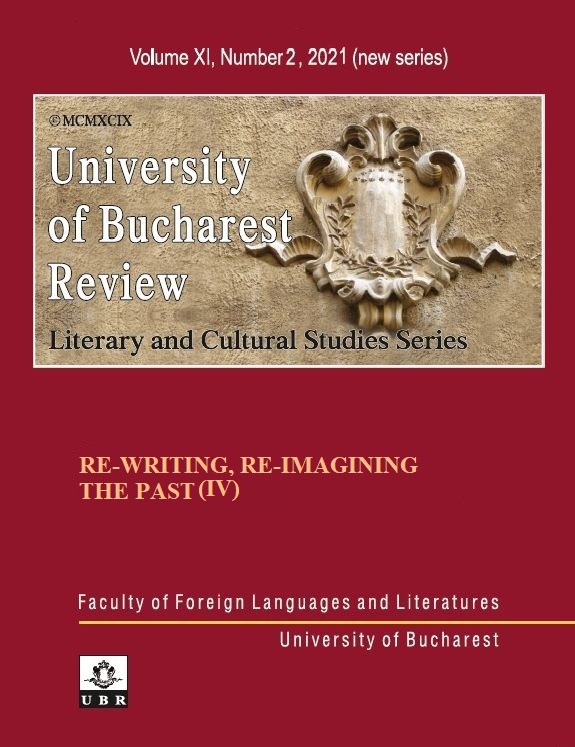
This paper examines the memory of the Romanian-German victims of the Soviet Gulag as recorded in recent collections of testimonies and interviews, a museum exhibition, an audio-visual documentary project, and Herta Müller’s 2009 novel Atemschaukel. It employs Alexander Etkind’s notions of “soft memory” and “hard memory” to discuss some of the key historical and political events that have impeded the establishing of consensual remembrance policies of the Soviet Gulag in communist Romania. I show how both German and Romanian communities since 1990 have memorialized the Gulag and discuss Atemschaukel as a legitimate impulse to document both personal and collective trauma of the second and subsequent generations. I argue that in the absence of a crystallized, hard memory, the historical documents and the historical fiction analyzed serve as viable examples of soft memory that succeed in memorializing the forced labor camps experience in its collective and individual forms.
More...
The subject of this article is the Polish-German “double biography” of Countess Joanna von Schaffgotsch as portrayed in the novel Zink wird Gold by Georg Zivier and Hans Nowak and in Gustaw Morcinek’s Pokład Joanny. The comparative analysis focuses on the dominant narrative threads and the approaches to represent this historical figure, with the portrayal of the countess as the “Silesian Cinderella” existing as a point of reference in the public consciousness. The analyses conducted in this context lead to the conclusion that Nowak/Zivier’s biography of the countess generally corresponds to historical truth and is realistic in this sense, while the ideological aspect dominates in Morcinek’s narration. The two ‘biographies’ do not take into account the regional specificity of the Countess figure.
More...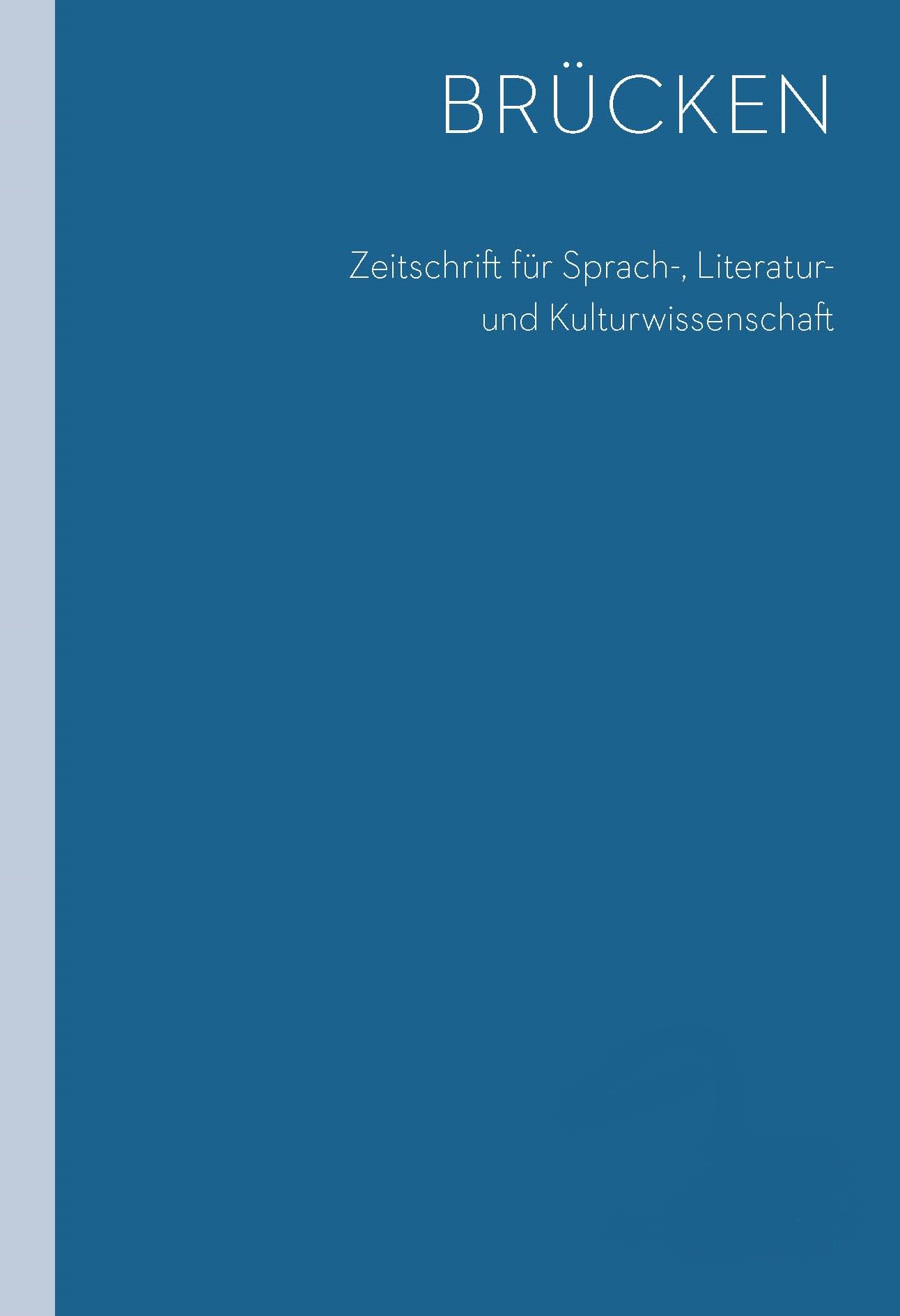
The article examines the constructed “old Prague” (Alt‑ Prag), in which scholarly and popular literature placed Franz Kafka. This reductive construct emerged during the rapid modernization and industrialization of the city at the turn of the 20th century. Kafka’s contemporary Paul Eisner developed a “triple ghetto” concept that overlapped with that of “old Prague.” Emanuel Frynta’s collage of texts and photos from the late 1940s and the 1950s situated Kafka in the “old Prague” and established a catalogue of Kafka’s Prague places. The “old Prague” concept however contrasted with the quickly growing and modernizing city. A modernist in his writing, Kafka fully took part in the new life of the city, its cafes, and cinemas. The link between Kafka and “old Prague” became entrenched by the 1960s and sanctioned by the Czechoslovak Communist state in foreign‑ language books for export. Starting in the second half of the 1950s, Western tourists came to Prague to search for Kafka, and viewed the author’s city through the constructed image of a by‑ gone Prague.
More...
Scientific book reviews were an important genre in late-18thcentury German journals. The mostly anonymous reviewers regarded themselves as voices of the scientific community, judging the quality of new publications for its benefit.However, as this paper shows, some reviewers aspired to more than judging the books’ content. The reviewers of Christian Heinrich Pfaff ’s, Alexander von Humboldt’s, and Johann Wilhelm Ritter’s monographs on galvanism, published between 1796 and 1805, used the language of epistemic virtues and vices to present their readership with their ideal scientific persona meant to support the development of the empirical sciences.
More...
This article focuses on representative paratexts accompanying Polish language editions in fairy tales from Jacob and Wilhelm Grimms’ selection published in Poland in 2000–2021. On a basis of forewords, afterwords, blurbs, information included in prelims, and colophons, an attempt was made to signal research problems concerning the cultural status of Grimms’ fairy tale emerging from paratexts. Particular attention was paid to communication strategies of editors, publishers and translators, as well as to potential consequences in how elements surrounding and supplementing the actual text of a tale were received by the readers.
More...
Takis Würger’s novel Stella, published in 2019, has received mostly unenthusias-tic reviews from literary critics because, in their opinion, it does not do justice to Stella Goldschlag's historical persona. Rather, the text merely turns a tragic conflict into Holocaust kitsch. In order to examine this judgement, the article analyses the poetics of the novel. This analysis reveals two things: the text does not in fact strive for a historically accurate portrayal of Stella Goldschlag, but reflects on the different ways of accessing the historical phenomenon. In this sense, Stella may be seen as an passable attempt to write modern literature about the Holocaust for today's generation. It does not, however, do so consistently be-cause it oscillates between the genre of the historical novel and allegory. The fic-titious narrator, Friedrich, also proves inconsistent. His mixture of naivety and pathos indeed tends towards kitsch.
More...
Oral narratives and texts create an effect area from the local to the universal culture and with temporal approaches from the individual to the society. Many events, phenomenons and notions which are carried to the mental world of the society with texts, in time, become settled implementations and behaviours. In social positioning under changing conditions, the narratives and texts which include woman provides continuity. The women’s voices whose presences are shaped with the decisions of other’s and male’s thoughts are heard yet via others and men. While passing from the oral narrative to the written, reflecting women’s biological gender differences , so as to create the perception of “the other” attracts attention. The thing that take attraction is that the women in the narratives, rather than her biological gender, is exposed to gender configuration which derives from sanctions and behaviour forms approved by the society. In the narratives and works named as Rapunzel, Maiden’s Tower and Hurşidname, even before their birth, a life area which lives ordinary people is not prepared for women. Women are not allowed to decide on their bodies and lives. In Rapunzel, Maiden’s Tower and Hurşid ü Ferahşad, it is seen that men, especially the one who is closed to the woman character, is in position of decider on behalf of woman. These works mention about family and society based an asset configuration on women’s biological gender. In this work, the tale of Rapunzel who was isolated from society because of religious and cultural norms, The Maiden’s Tower legend which explains a girl’s tale to the island-shaped towerby her father fort he purpose of saving her from dangers and Hurşid ü Ferşad mathnawi which is one of the important ones in terms of text fiction are approached and compared on account of common sides on viewing women. Firstly, the fact that these narratives and works are not just a text and their contexts cause positioning of woman in the plane of family and society is introduced. These texts give opportunity to search, determine and analyze samenesses of social viewing comes from beyond centuries towards to woman even though these samenesses belong to different cultures and improve in different types.
More...
Review of: Cludius, Carl Eduard (2022), „Faust” Goethego jako apologia chrześcijaństwa. Białystok: Temida 2, ss. 162, ISBN 978-83-67169-10-3
More...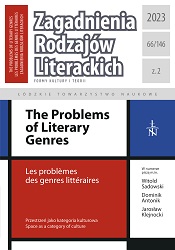
The article’s author analyses the essays and reportages of Martin Pollack, which he considers interesting research material due to the writer’s past and topics related to environmental humanities and violence against Jews. In his work, Pollack reconstructs the Nazi past of his father and grandfather and traces moments of tension between Jews and Austrians and between members of his own family. In his project, a criticism of a society unaware of the consequences of youth radicalisation is adjacent to an analysis of situations in which the memory of the Holocaust has been repressed. Passivity manifests itself on many levels and concerns, not only the lack of reaction to the violence inflicted but also the failure to mark the places of mass extermination of Jews (the case of Rechnitz). Pollack’s essays concern the repressed memory of the Holocaust in Austria and the history of genocide traced from a post-anthropocentric perspective. The article’s author examines how the writer practices space and makes it cease to be only a stage of the events described. The practice of space allowed Pollack to propose the term “contaminated landscapes” which describes procedures for murdering victims in secluded places chosen for their proximity to swamps or special terrain. Its operability is justified on the condition that the claims of anthropomorphisation of the landscape are abandoned and included in the genocidal process as an accomplice. A more sensible procedure is to shift attention from the landscape to practices referred to as necroviolence. The perpetrators’ abandonment of funeral rituals and the abandonment of bodies in the pit include them in the circulation of matter in nature and indicate the violent nature of these practices. The author of the article checks the operability of the category “contaminated landscapes” and describes Pollack’s project as an auto/bio/geo/graphy (a term proposed by Elżbieta Rybicka), in which writing about one’s family forces one to take a position towards a place antagonising residents and complicating the biographies of individual members.
More...
The paper is devoted to the life and work of the German poet of Jewish origin, Franz Janowitz (1892-1917). The contribution includes extracts from his poems in German.
More...
The German–Polish conflict about Upper Silesia from 1918–1922, which is one of the most important historical and political issues in the literary work of Ernst von Salomon, particularly in his autobiographical novels, is briefly analysed in the context of his turbulent biography, his work and autobiographical strategies. In von Salomon’s novels, the sheer conflict seen as a fight over new frontiers in Central and Eastern Europe in 1918–1922 becomes a subjective narration which results, to a large extent, from his involvement in the postulates of the German national revolution as one of the trends of the Conservative Revolution in Germany between 1918 and 1933. At the end of the paper, this conflict in Salomon’s literary perspective is briefly analysed around key issues based on selected examples from his autobiographical novels.
More...
The study Between dream and reality: Mihai Eminescu and Novalis is an application of literature field, comparative literature in particular. Thesis in the direction which it argues: Both Eminescu and Novalis, in prose belive that the world is a dream trough which the dream becomes the world. In our opinion, the motif of the blue flower, the preference for nocturnal and dreamlike spaces, are the axes that create the connection between the Romanian and German poets. The probing of the real depths and the principle of the continuous present are also visible in the short story Poor Dionis by Mihai Eminescu, as well as in Disciples from Sais. Henrich von Ofterdingen by Novalis. In conclusion, the life transcribed, in a poetic act, the nocturnal space that favors dreaming and the descent into the essential depth are specific to the thinking of both poets-prose writes. Similarly, the desire to access a higher knowledge, to the Absolute, is the key element can be identified from both Eminescu᾽s and Novalis᾽s thinking. All these ideas converge in European romanticism.
More...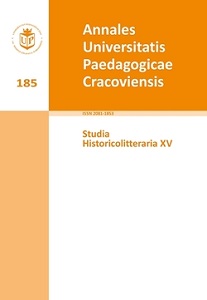
World War I (1914–1918) was one of two wars in Europe which Germany sought. One of the participants of the war was a German soldier and writer Ernst Jünger, who described his experiences in Storm of Steel (In Stahlgewittern). His diaries are a valuable source of knowledge of the Great War. Sincere confessions of a German soldier who during the war was promoted through the ranks is also a story of a daily life on the front of both Jünger and the subordinates of the German Emperor – Wilhelm II. The diary holds a special place among books about war due to their origins – written by a German fluent in French and passionate about French literature and culture. Jünger’s dairy was translated into Polish by a soldier Janusz Gaładyk and given the title Książe piechoty. Through such a title, Gaładyk paid his respects to the German comrade. The book has a didactic character because it shows the multidimensionality of the atmosphere in the German army.
More...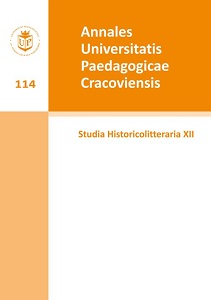
A search for identity by ‘the uprooted’, people forced into exile as a result of post-World War II changes in Europe, is a very frequent theme in the 20th century literature. An exile is a perennial wanderer, with no place of his own. The article focuses on the issues of exile, uprooting and a search for new identity, analysing selected works of a German writer Herta Müller; Polish writers: Inga Iwasiów, Stefan Chwin, Tadeusz Konwicki, Czesław Miłosz, Zbigniew Żakiewicz and poets from Vilnius: Romuald Mieczkowski and Henryk Mażul. In her works, Herta Müller deals with a totalitarian state, showing a man trapped in the repressive system. Her protagonists are usually weak and lose against their oppressors. Confronting the past risks bringing back old demons, dangerous emotions and distressing events. The brutality of Müller’s prose lies not only in the depiction of how individuals are uprooted but also how they ‘uproot themselves’. Their lives are a struggle for survival, the latter frequently at the expense of renouncing on their identity, friendship and love. Polish writers (Iwasiów, Chwin, Konwicki, Miłosz, Żakiewicz) present the lot and different life stories of people uprooted after the World War II, without, however, depriving them of their unique personalities and positive features. Forcefully repatriated, fleeing compulsory relocations to Siberia, Polish exiles from the Eastern Borderlands, the territory annexed by the Soviet Union, found a new homeland in Poland, albeit not without initial problems. The memory of their origins, which they retain, accounts for their dual identity. Such duality characterises also the poets form Vilnius (Mieczkowski, Mażul) who write in Polish. Polishness and the Polish culture are constantly present in their works, irrespective of where they live.
More...
This is the first publication of a previously unknown translation of over 200 lines from Parzival by Wolfram von Eschenbach, which survived in Ellis’ (Lev Kobylinsky) anthology Pevtsy Germanii (Singers of Germany). Ellis started to compile this anthology with the purpose of demonstrating the incompatibility of genuine German cultural and religious traditions with the ideology of the Third Reich. His selection of texts for the translation was largely prompted by his previous studies, which included Richard Wagner and Wagner’s sources, esoteric interpretations of the image of the Holy Grail, and the reception of monuments of the Western European Middle Ages.
More...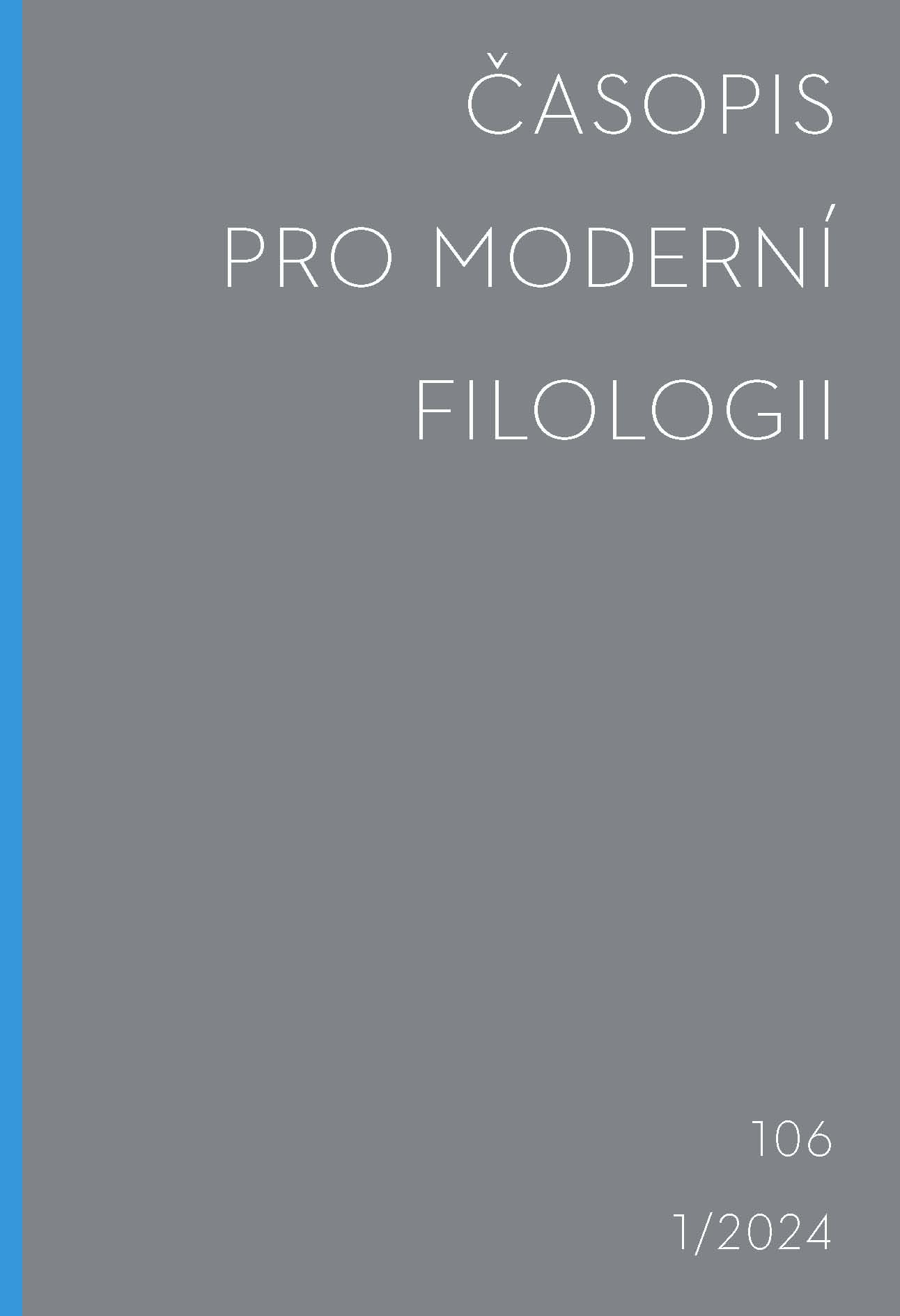
Given the role that word-formation plays in vocabulary organization, there seems to be a consensus that word-formation needs to be taken into account in some way within the lexicographic process. Thus, the present study is devoted to central issues of dealing with word-formation in the dictionary, which include its consideration in the so-called outer texts, the type of macrostructure, entries of word-forming elements, special word-formation sections of the entries, word-formation in the definitions, and the use of typography to highlight word-formation phenomena. The subject of the analysis is selected dictionaries of the German language primarily published before the year 1854, which represents an important caesura in German lexicography constituted by the publication of the first volume of the Deutsches Wörterbuch (German Dictionary) by the Brothers Grimm. Much more often than in the case of today’s lexicographical works, the view of word-formation is linked to a more general conception of language and reflections on it, or even to a broader cultural context, including religion, or life in a pre-secular society, respectively.
More...
The article deals with one chapter in the history of German Studies as a scholarly pursuit at the University of Prague. Specifically it attempts to describe the circumstances of the foundation of the Department of German Studies in 1874 and its development until 1882, when, after the division of the University of Prague, two autonomous Departments of German Studies, responsible for academic philological research into German, as one of the national languages and literatures in the Czech Lands, were established at the German and Czech Universities of Prague respectively. The establishment of the Department of German Studies meant the definitive institutionalization of German Studies at the University of Prague and at the same time the full integration of German Studies into the system of scholarly disciplines. Attention is also paid to the personalities of the founders — Johann Kelle and Ernst Martin — and their colleague Hans Lambel.
More...
Emerson, the American essayist and poet, was an admirer of Johann Wolfgang von Goethe, the German writer, poet, and philosopher. In his essay titled “Goethe; or, the Writer,” Emerson wrote about Goethe’s literary works and his influence on the world of literature. He heralded Goethe’s Faust as “the work of one who found himself the master of histories, mythologies, philosophies, sciences and national literatures.”
More...